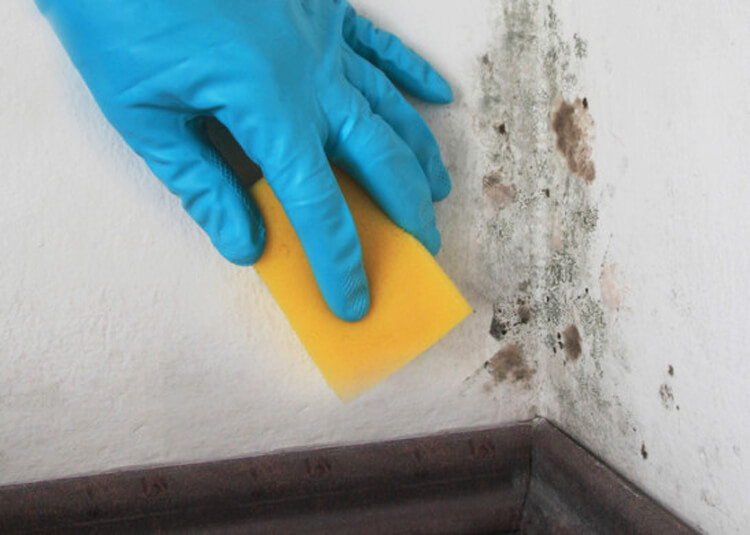Experts advise that you should never use bleach for mold removal, whether on a porous or non-porous surface. There are many reasons for this and mainly because, using bleach to treat or clean mold can jeopardize your health.
Common household bleach is not necessarily toxic, but prolonged exposure to bleach can be very harmful to humans. When in the gaseous state, chlorine bleach produces a byproduct called dioxin, recognized as a cancer-causing compound. Hence, inhaling bleach is dangerous.

Why We Don’t Recommend Bleach for Mold Removal
- Bleach doesn’t kill all mold. Big bleach companies have promised that nothing else will do the job of removing mold only their bleach. Yes, it is great for disinfecting, and they work to remove mold in impermeable, hard surfaces like bathtub, shower surrounds or tiles. However, in porous and semi-porous surfaces like drywall or hardwood floors, it will not work and can actually contribute negatively to certain mold problems.
- Bleach can weaken the wood. Chlorine bleach is extremely harmful to wood and many other surfaces. If bleach is applied on wood, it will weaken the wood by breaking down its fibers. This can create further problems with the structure of the home.
- Mixing Bleach with ammonia creates deadly gas. According to Washington State Department of Health Toxic gases called chloramines are produced when you mix bleach with ammonia. Once exposed, they symptoms such as coughing, nausea, chest pain, watery eyes, and shortness of breath.
- Bleach is toxic. Bleach is corrosive, considered as a toxic chemical and classified the same as gasoline.
- Bleach is harmful to your skin. Exposure to bare skin creates a hydrolysis reaction which means the “oily” feeling on the top of the layer of your skin starts to dissolve.
What is The Best Way To Get Rid Of Mold
Trying to get rid of mold without proper knowledge or without a professional’s help may aggravate the situation or result in even more significant problems than the mold itself.
To get rid of mold completely and prevent mold regrowth, you have to determine the type of mold you are dealing with, the extent of growth, and the root cause of the problem. You have to find the best method to remove the mold, and sometimes this may involve removing the moldy surface completely. You also need to find and repair the source of moisture so mold does not grow again.
Natural ways of removing molds are best advised since most cleaning agents like bleach only remove the mold on the surface without getting to the roots. Also, some of these cleaning products have chemicals that can be toxic to humans.
